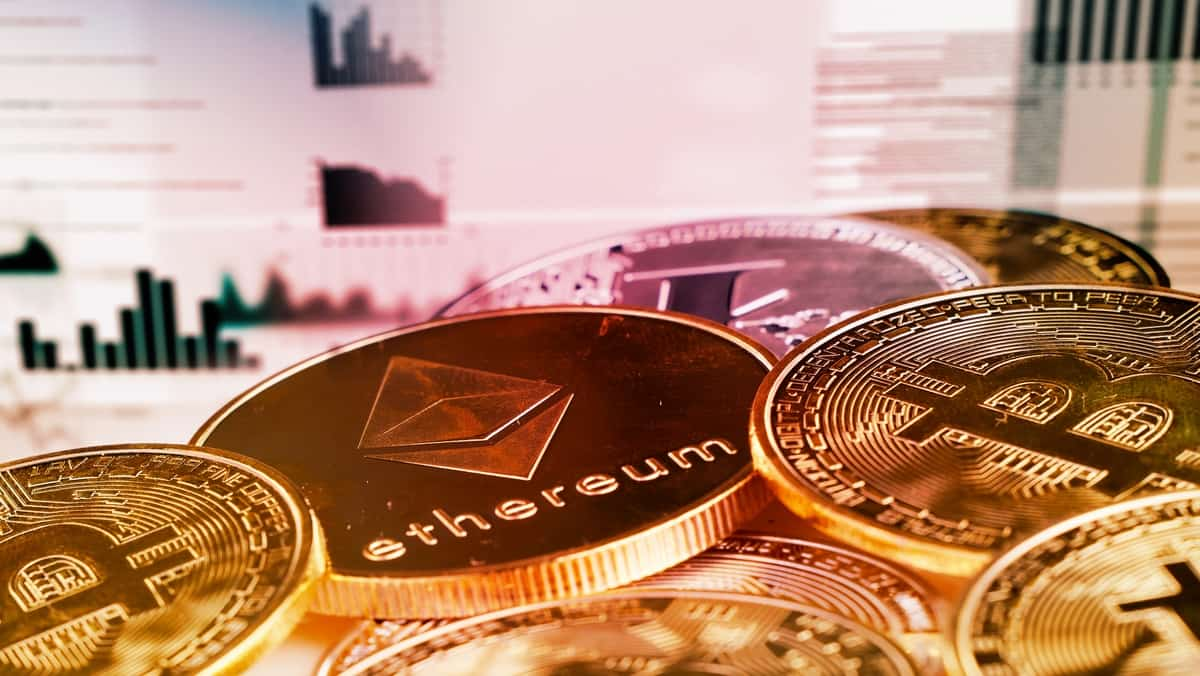
Monday Sep 30 2024 07:00

5 min

Bitcoin price reached a one-month high after central banks' rate cuts in September, with analysts expecting the upward trend to persist.
Bitcoin prices have surged to their highest level since 26 August, propelled by an acceleration in the global central banks' easing cycle.
The largest cryptocurrency has soared 21% since the second week of September, with its price climbing from above $53,000 (€47,400) to more than $64,000 (€57,200) on Wednesday.
Cryptocurrencies are considered high-risk assets that have seen a notable surge in response to central banks' pledges to lower interest rates.
In September, the European Central Bank executed its second rate cut of the year, and shortly after, the US Federal Reserve made a significant 0.5% reduction.
On Tuesday, the People's Bank of China announced a range of easing measures, which included cuts to key lending rates and increased cash injections into the market to support its economy.
These more favorable liquidity conditions have sparked a rally in the digital token markets, driving Bitcoin prices to reach a one-month high.
Historically, Bitcoin prices have shown a tendency to rise during times when the Federal Reserve shifts to an easing monetary policy.
During the pandemic in 2020, Bitcoin prices surged by 1,600%, climbing to over $64,000 in April 2021 from the previous year.
This dramatic increase was largely fueled by global central banks implementing near-zero interest rate policies, which injected substantial liquidity into the markets, alongside a surge in Bitcoin mining and trading activities.
However, the cryptocurrency market faced a significant downturn following its peak in November 2021, when the Fed indicated plans to tighten monetary policy. As a result, Bitcoin fell by 78%, dropping to just above $15,000 (€13,400) by November 2022.

In 2024, enthusiasm for cryptocurrencies has rebounded, with Bitcoin climbing 52%, Ethereum rising 12%, and numerous other digital tokens also seeing price increases.
Bitcoin continues to lead the digital token markets, bolstered by its growing acceptance among key institutions and regulators.
Its price jumped 48% in February after the US Securities and Exchange Commission (SEC) approved Bitcoin spot ETFs, just ahead of the significant Bitcoin halving event in April.
This halving event, which occurs roughly every four years, reduces the reward for mining new blocks by half.
Since March, Bitcoin's price has remained relatively stable, with few major catalysts in the crypto market.
However, it saw a brief spike in July when US Republican presidential nominee Donald Trump spoke to crypto advocates at the Bitcoin 2024 conference.
The former President promised to make the United States "the crypto capital of the planet and Bitcoin the superpower of the world."
The decline in fiat currency value, soaring inflation, and bank credit losses have been significant factors driving the rise in Bitcoin prices.
Despite ongoing regulatory hurdles, many believe that decentralized transactions are the future of business.
Crypto enthusiasts argue that the Bitcoin price rally is just beginning.
Activist investor and ARK CEO Cathie Wood noted at the Bitcoin Investor Day conference in 2022 that Bitcoin could surpass $1.5 million (€1.3 million) per coin if institutions allocate 5% of their portfolios to it. She also stated in an interview with the New Zealand Herald that she expects the price to exceed $1 million (€890,000) before 2030.
Other analysts have forecasted that Bitcoin's price could hit between $100,000 and $150,000 this year, using mathematical models based on halving cycles.
However, the extreme volatility of Bitcoin presents substantial risks for inexperienced investors, as speculative trading remains the dominant force in the cryptocurrency market, often lacking fundamental support.
When considering shares, indices, forex (foreign exchange) and commodities for trading and price predictions, remember that trading CFDs involves a significant degree of risk and could result in capital loss.
Past performance is not indicative of any future results. This information is provided for informative purposes only and should not be construed to be investment advice. Trading cryptocurrency CFDs and spread bets is restricted for all UK retail clients.
